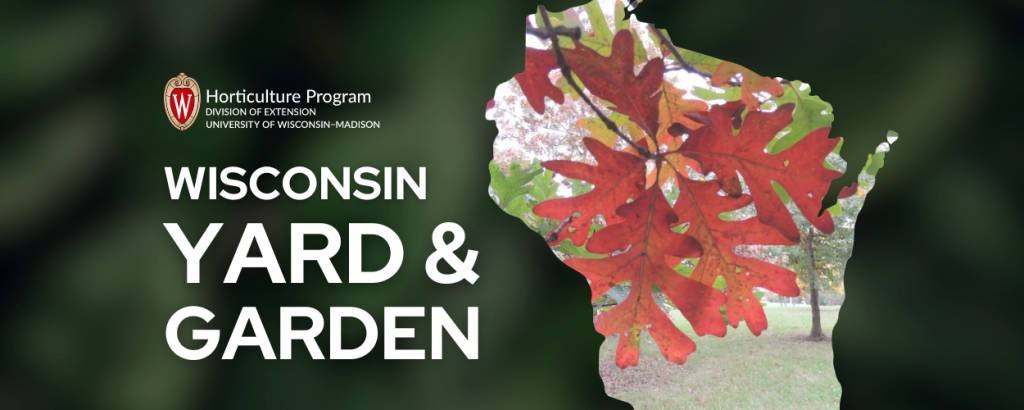
Oak trees are focal points of many home landscapes, parks, and green spaces throughout Wisconsin. Several species are native and can also be planted in landscapes. It is important to know characteristics of oaks and how to keep them healthy and problem free for years to come.
Two major groups of oaks are the red oak group and the white oak group. The red oak group, which includes red, black, and pin oaks, have leaves with pointed lobes with pin-like bristles on the tips. In contrast, the leaves of the white oak group have rounded lobes, and include white, bur, and swamp white oaks.
Red oak (Quercus rubra) grows wild throughout Wisconsin and is the most common oak in forests of northern Wisconsin. It is one of the fastest growing oaks, also a popular street tree. Leaves are dark green and often vary in appearance on the same tree. Acorns have a thick saucer-like cap and are popular with deer. Black oaks (Quercus velutina) found in southern Wisconsin woods, often cross with red oaks. Pin oak (Quercus palustris), not native but commonly used in landscapes, is prone to chlorosis (yellow foliage) in alkaline soils.
White oaks (Quercus alba) are durable, large canopied, long-lived trees that grow slowly and are common in southern Wisconsin forests. Leaves can vary from shallow to deeper round lobes. Acorns are extremely popular with wildlife. Bur oak (Quercus macrocarpa) is similar, but leaves are large and fiddle shaped, with a deep cut in the middle; feature rough, deep furrowed bark and fringed acorn caps. They typically grow a little faster and are easier to transplant than white oaks and tolerate urban conditions better than most oaks.
Swamp white oak (Quercus bicolor) is native to wet sites in Wisconsin but will also tolerate dry sites. Leaves are leathery, can vary between toothed and lobed, with distinct contrasting dark upper side and lighter undersides. They are easier to transplant than white oaks, are drought resistant, and their acorns are sought after by wildlife.
One of the biggest threats to oak health, especially established trees on wooded lots, is damage to root systems. Avoid digging and breaking roots, compacting soil with equipment or building materials, and adding soil over oak root zones. Protect entire root zones, which spread beyond the dripline, when working near oaks.
Oak wilt is a major disease concern that property owners with oaks need to be aware of. Symptoms include wilting and bronzing of leaves, usually starting in the upper portion of trees. Avoid pruning oaks in summer to help reduce the risk.

About the Author
Bruce Spangenberg is a Horticulture Outreach Specialist with UW-Madison Division of Extension. Get answers to your lawn, landscape and garden questions anytime at “Ask Your Gardening Question.”




